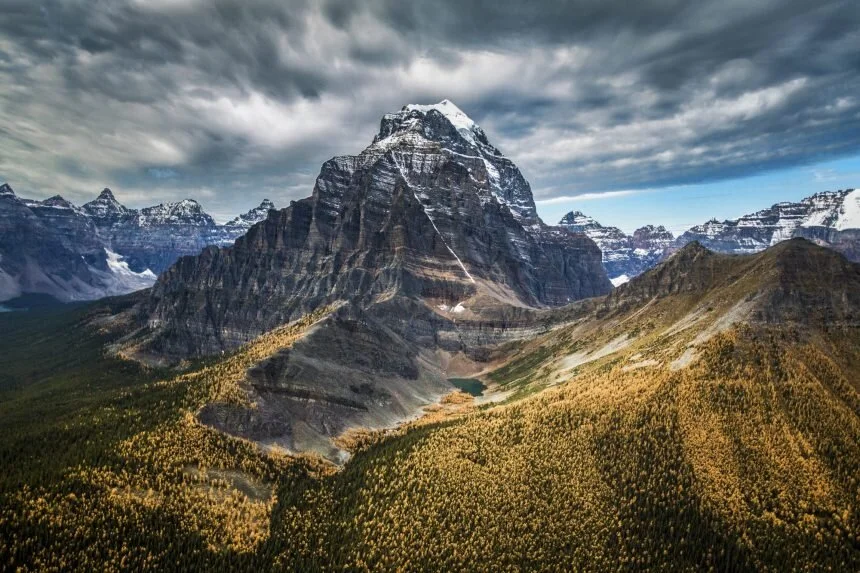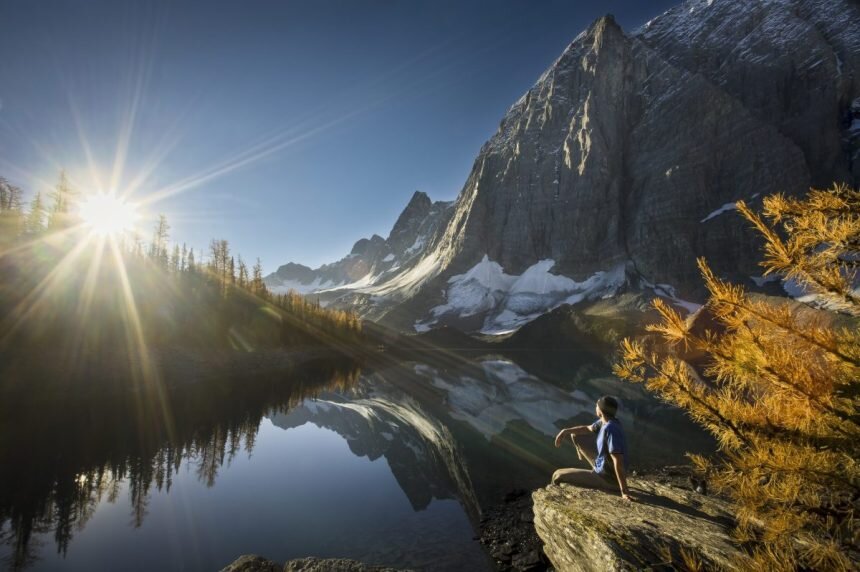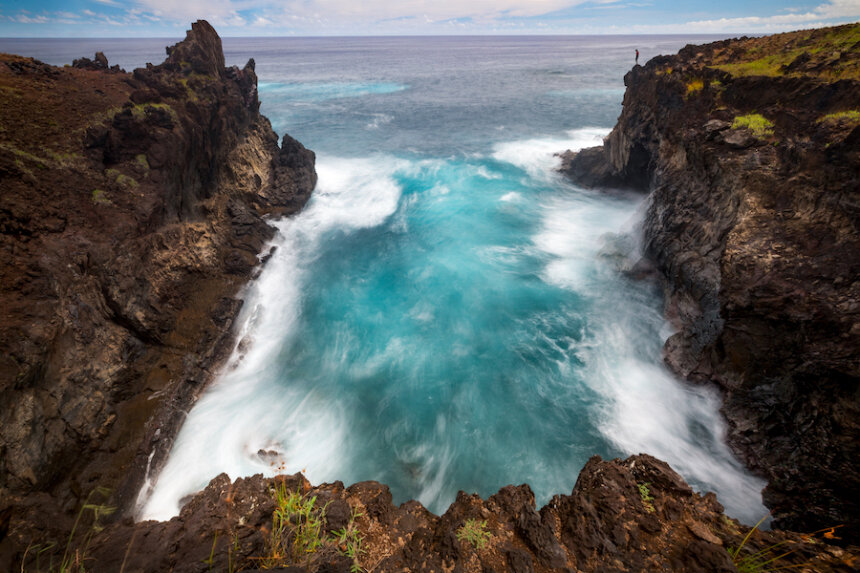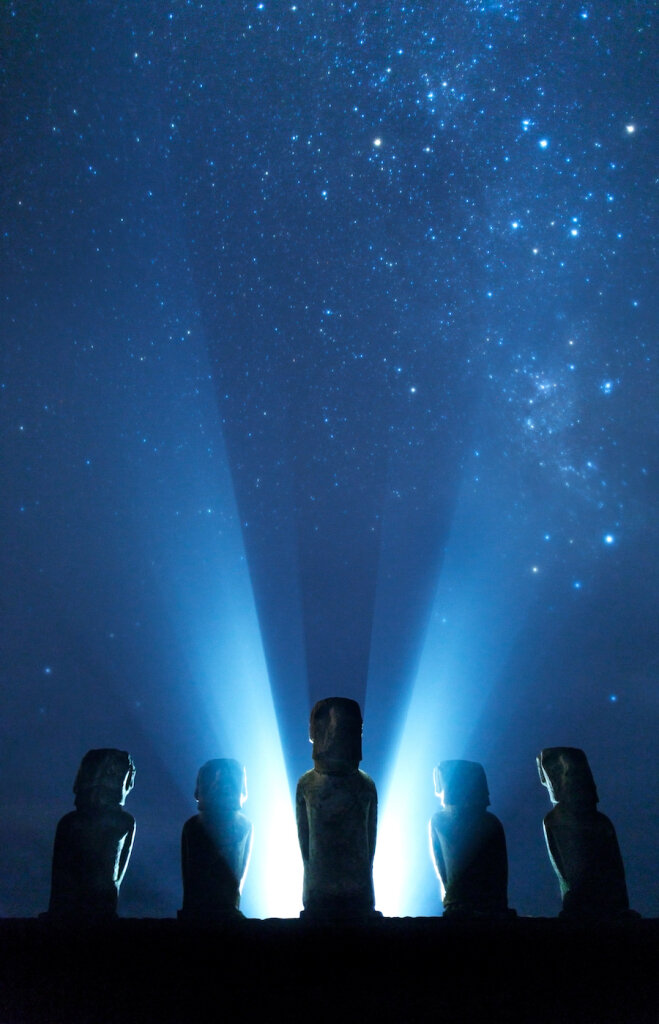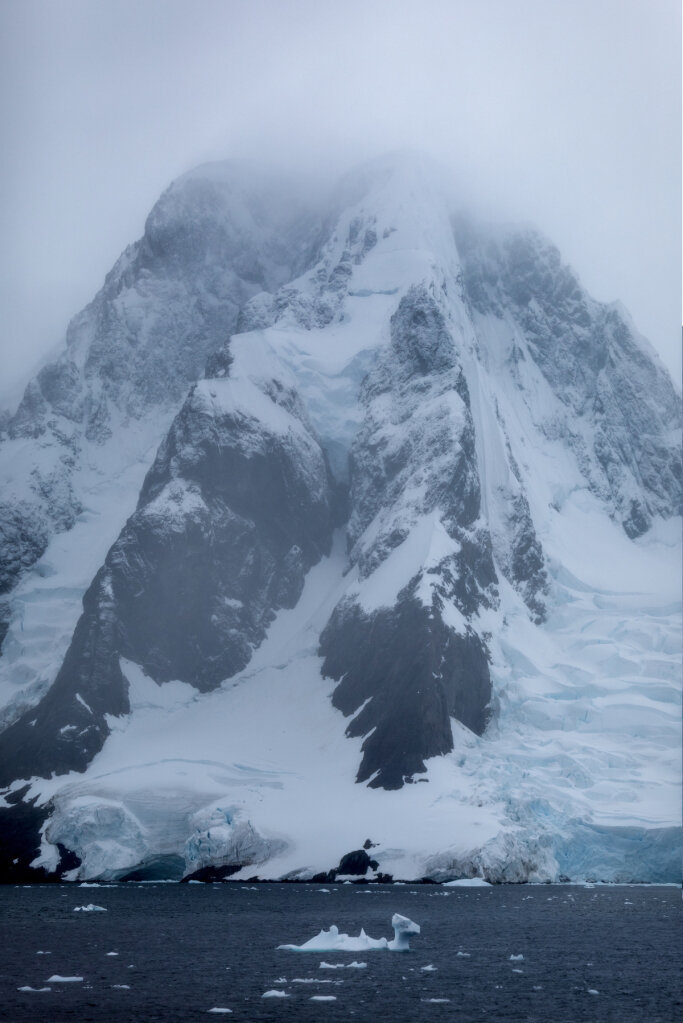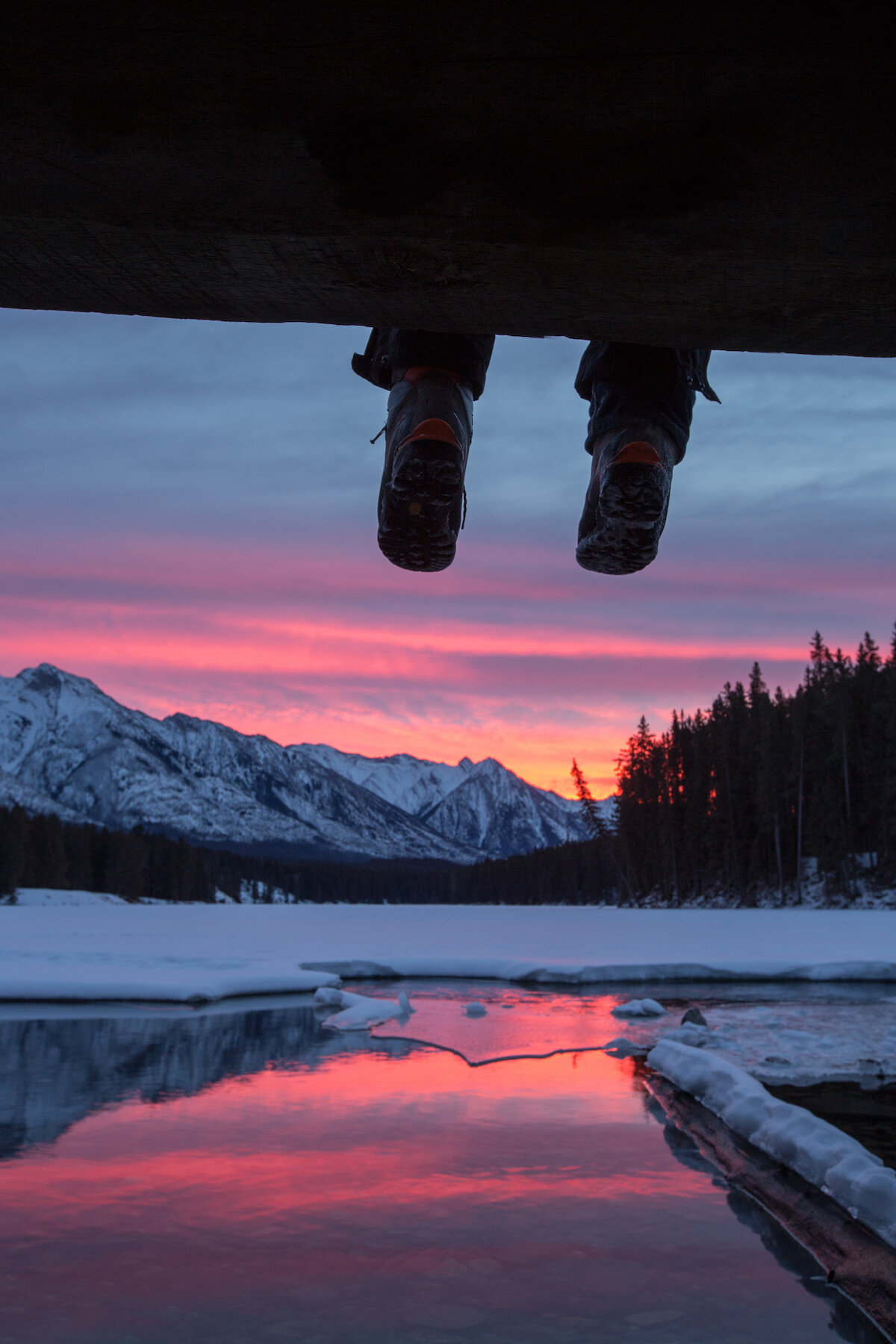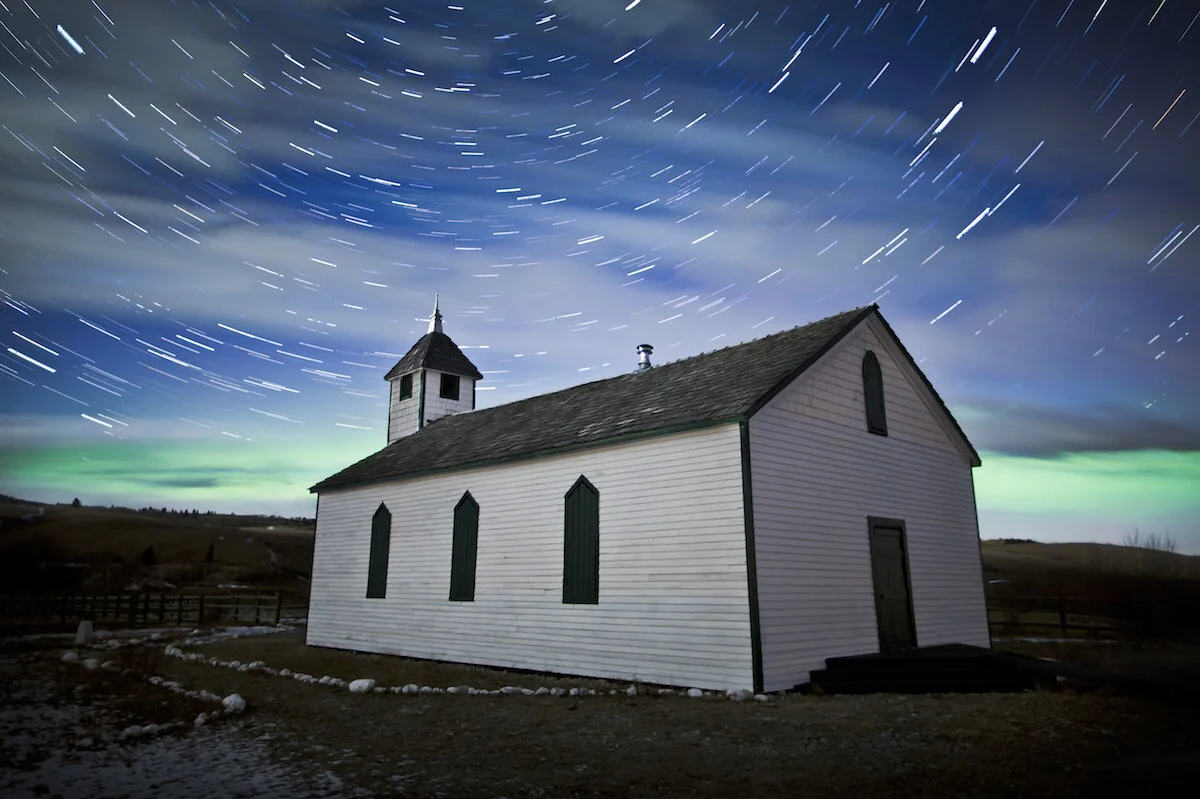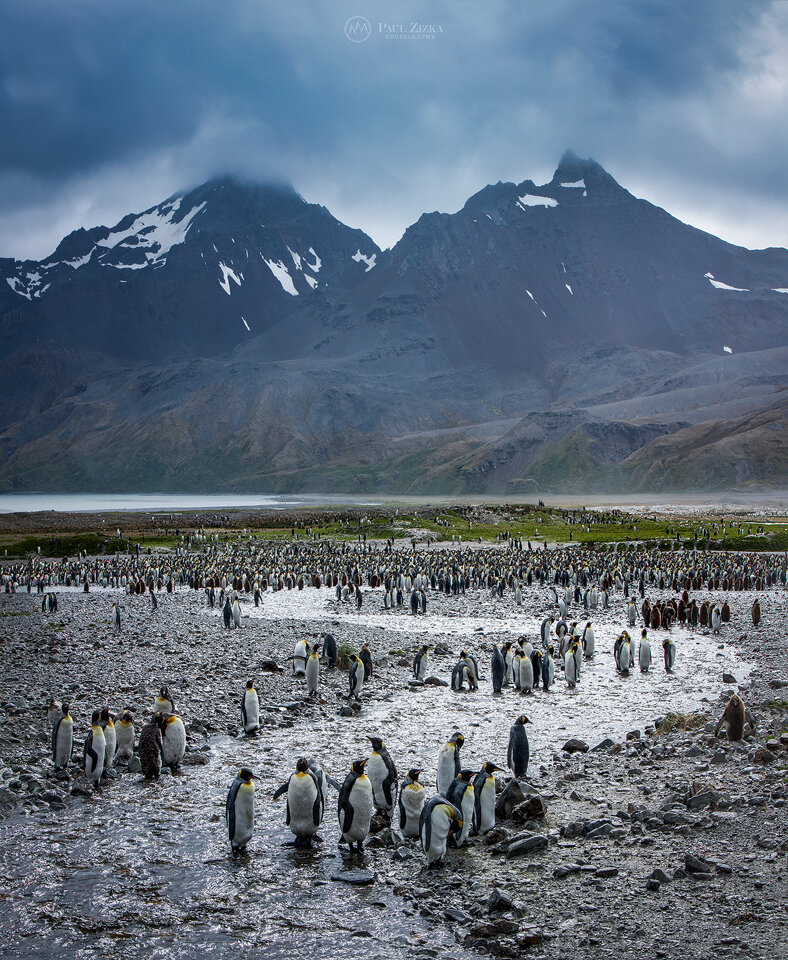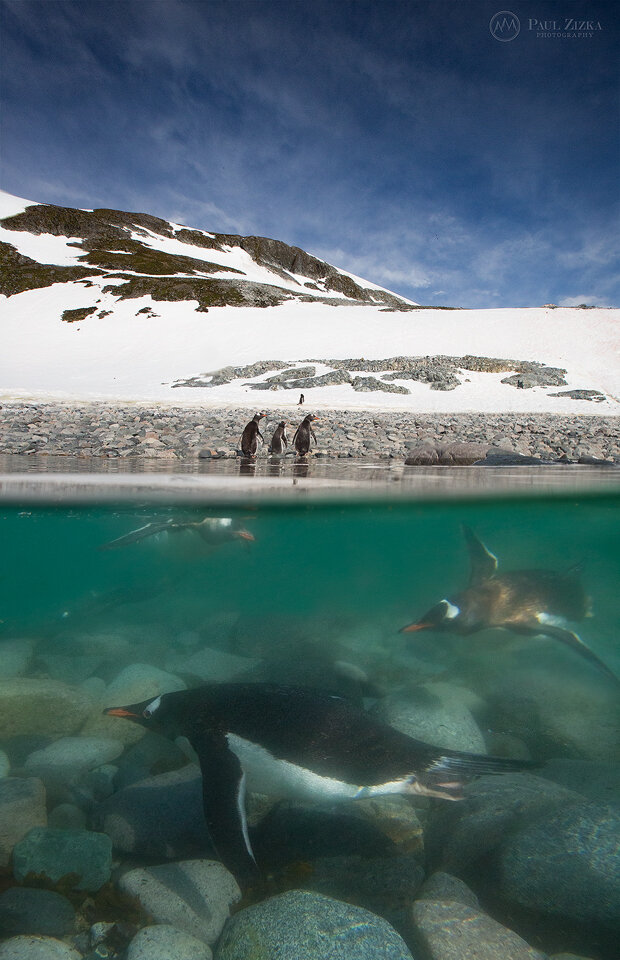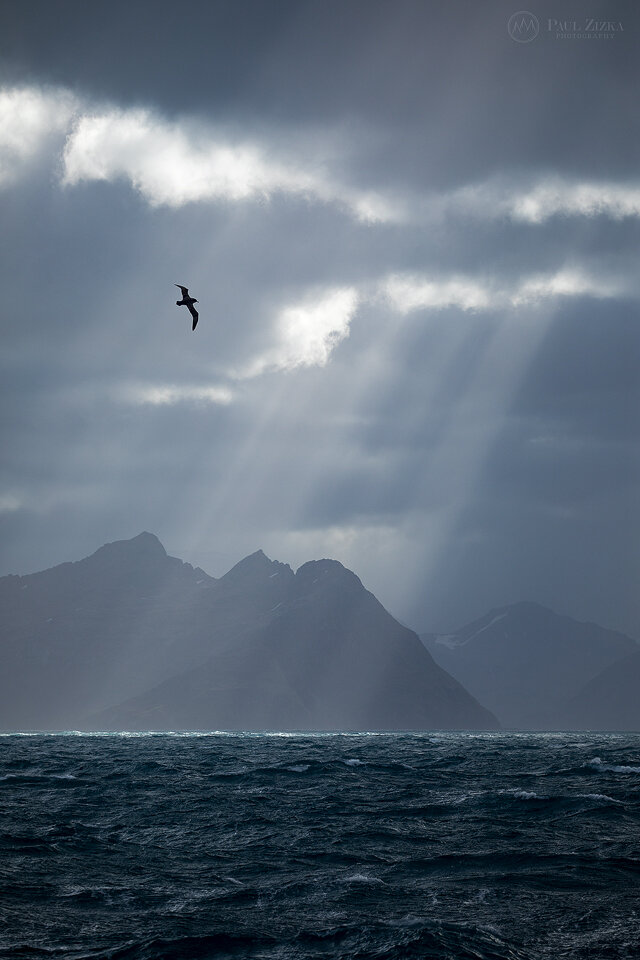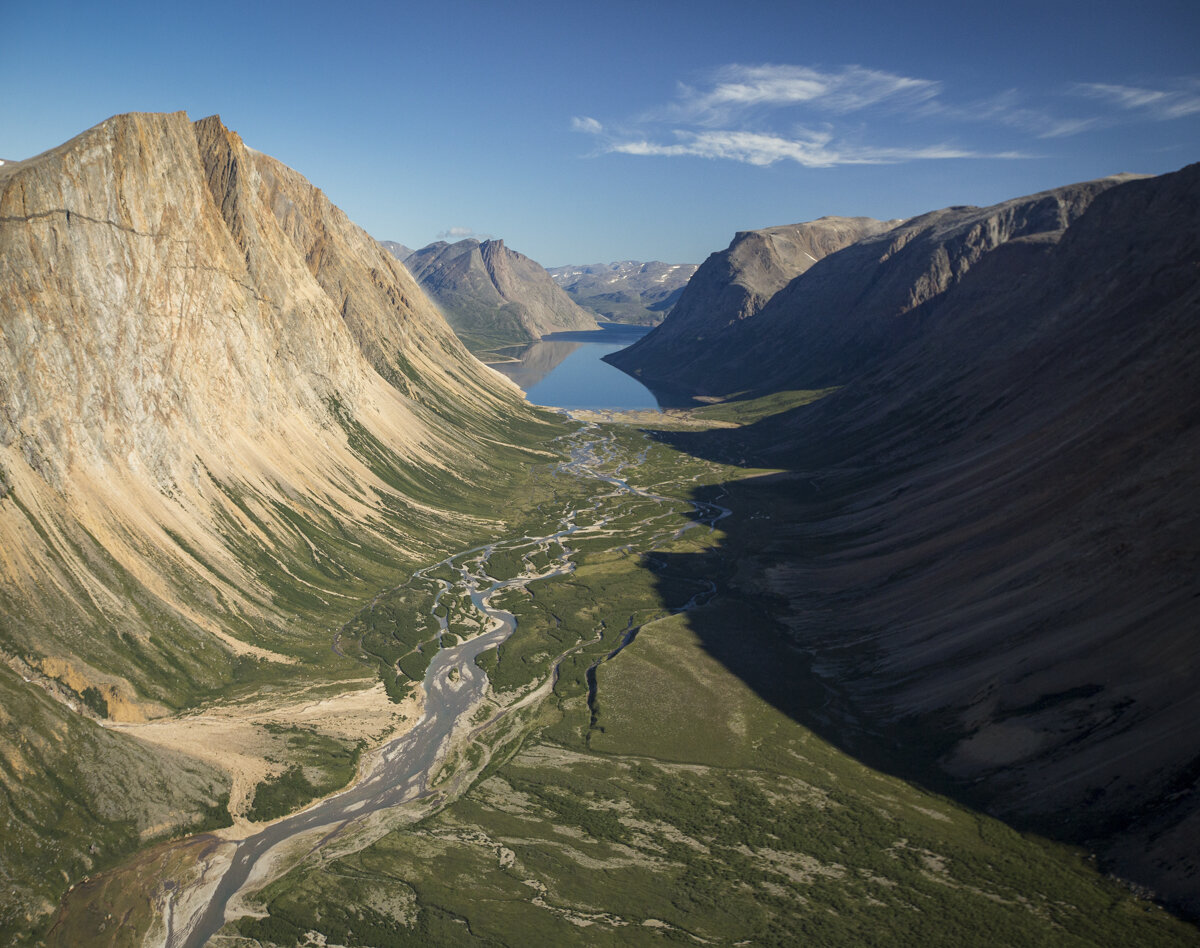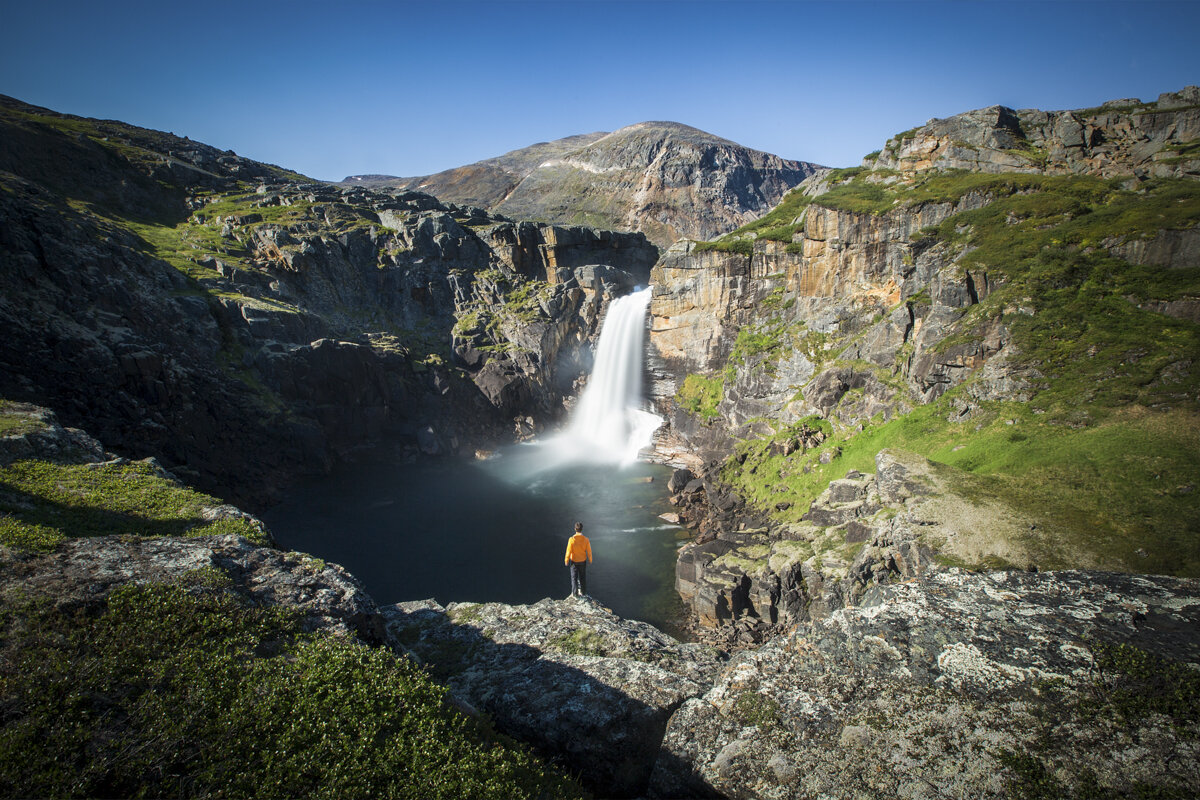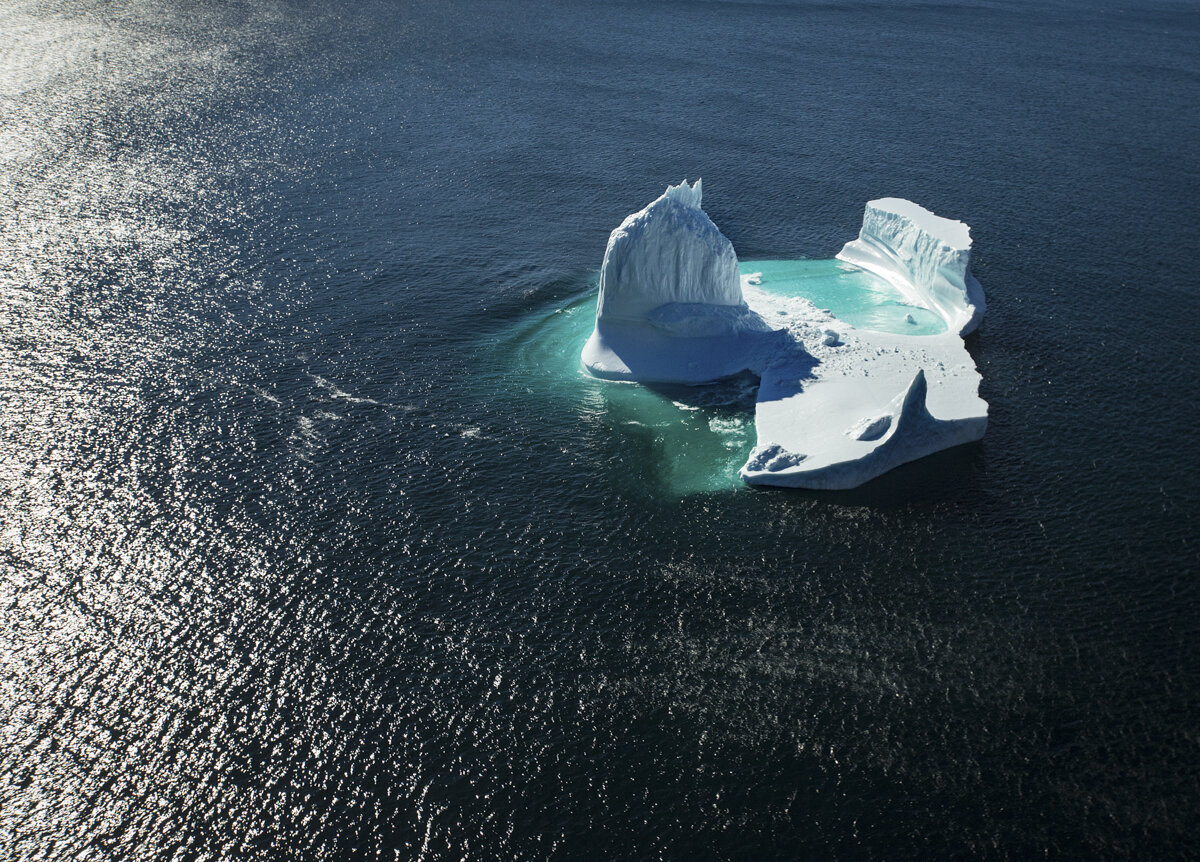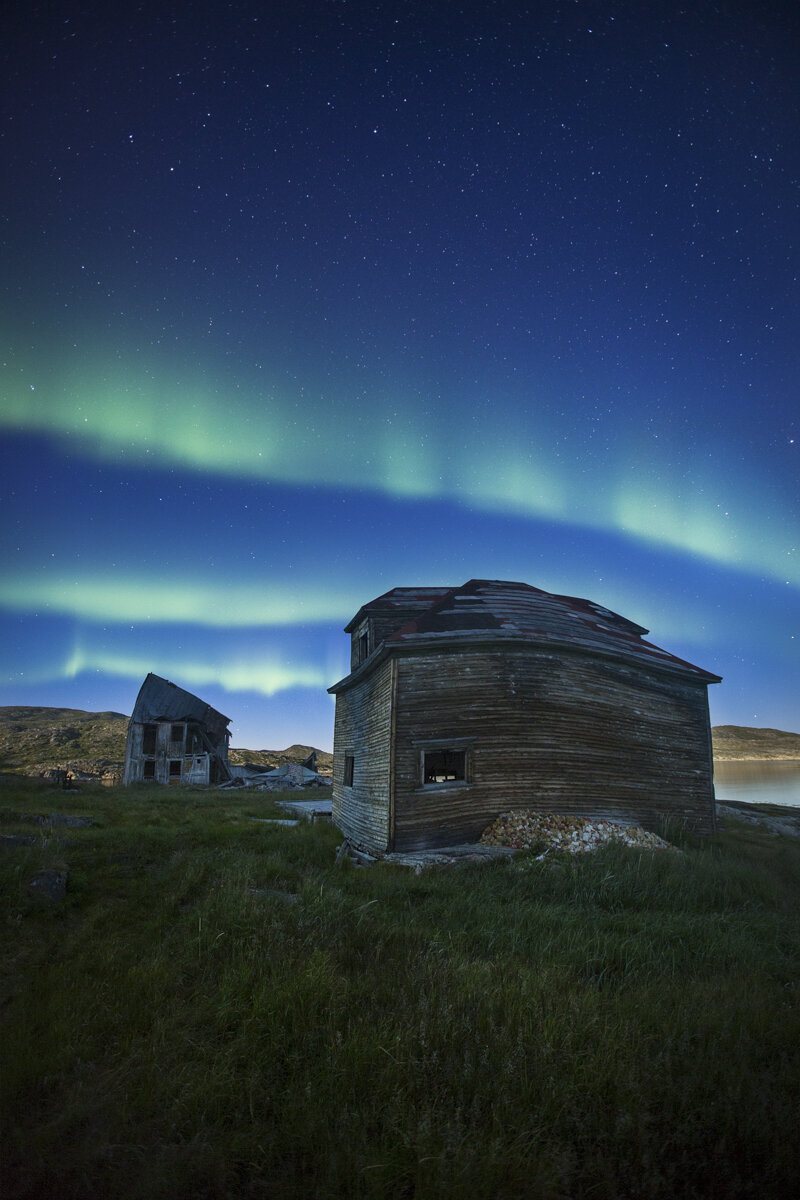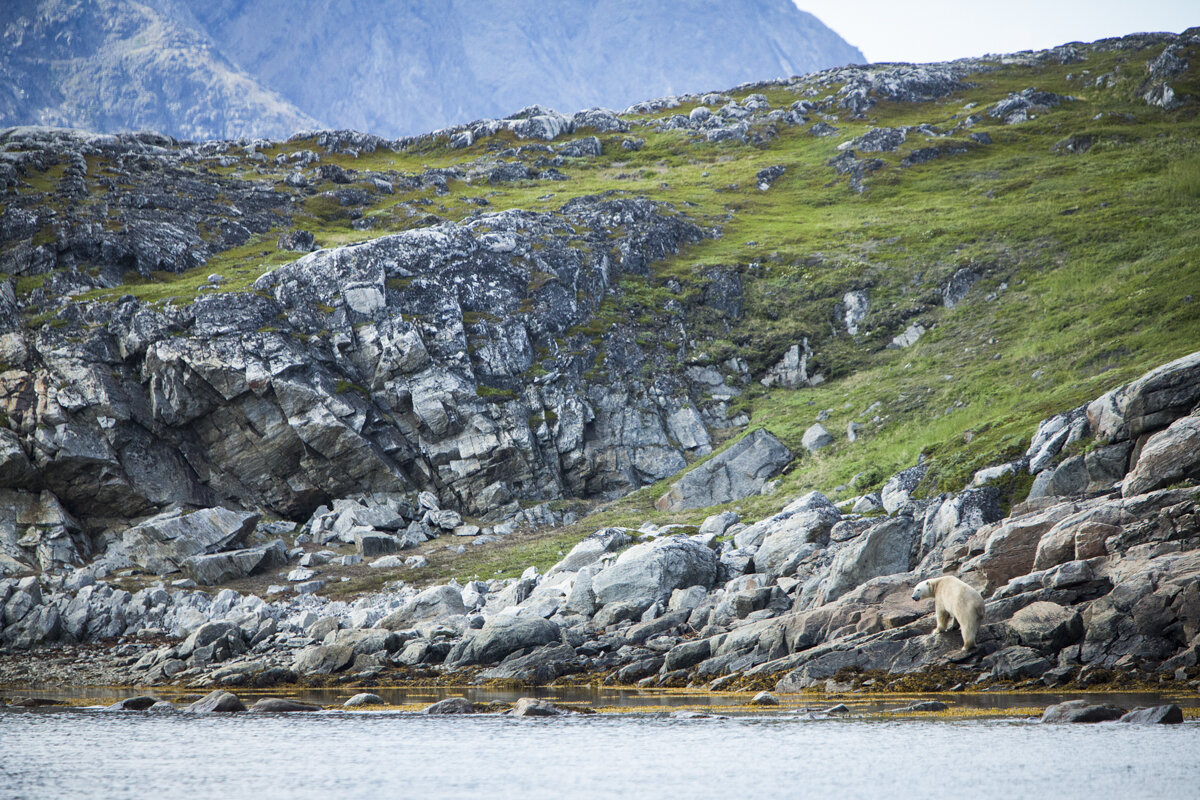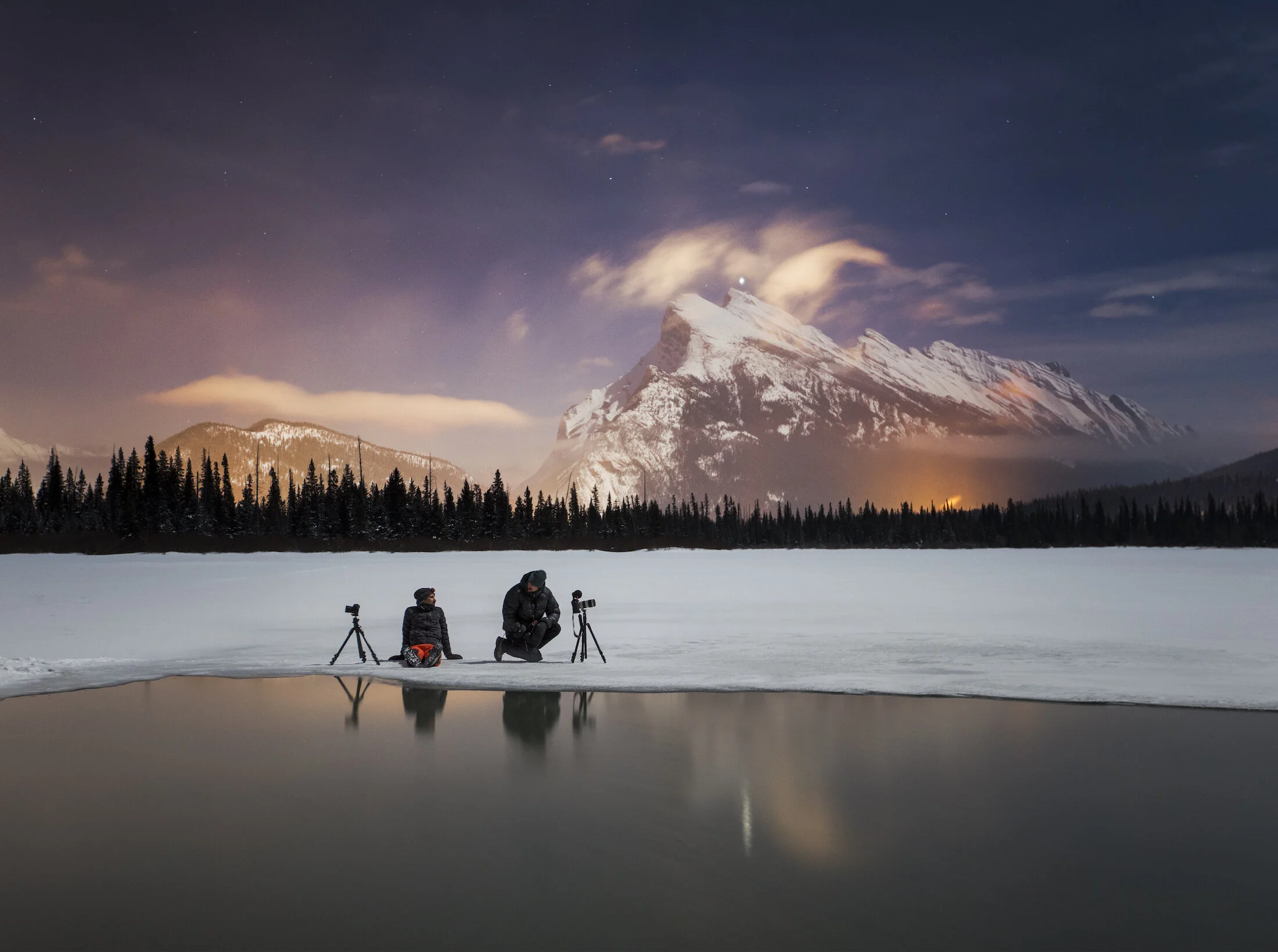
The Frozen Bubbles
The lakes are starting to freeze in the Canadian Rockies, and the bubble craze (and skating season!) are just around the corner. I get a lot of emails in the winter about the methane bubbles that form under the ice, so I thought I’d provide a bit of info so more people can learn more about them.
The lakes are starting to freeze in the Canadian Rockies, and the bubble craze (and skating season!) are just around the corner. I get a lot of emails in the winter about the methane bubbles that form under the ice, so I thought I'd provide a bit of info so more people can learn more about them.
These bubbles can occur in many different lakes, and I have even shot the bubbles in 10-12 lakes in and around Banff National Park. However, the lakes eventually get snow-covered, and the majority of them will not show ice again until the spring when the bubbles are gone.
The bubble phenomenon occurs when the lakes are exposed to the warm Chinook winds causing some of the lakes to shed their snow to reveal the bubbles mid-winter. Some of the bigger lakes that come to mind are Abraham Lake, Lake Minnewanka, and Vermilion Lakes.
Locations:
Bubbles at the far end of Lake Minnewanka. Photo by Paul Zizka Photography.
Abraham Lake is by far the most popular location to document the phenomenon as its surface is very easily accessible, and it gets far less snow than other parts of the Rockies. It's a busy place, though, when the bubbles do occur - people come from all over the world to shoot here, but if you're willing to walk/skate a little, you can find solitude still.
The Vermilion Lakes sometimes offer very short windows where the winds will blow the lakes free of snow and reveal small pockets of methane bubbles. Don't expect wide vast swaths of them, though.
Lake Minnewanka has the best bubbles I've ever seen, but they're often best at the far end of the lake, 20+ km from the road. For that reason, I expect it'll always be quiet there. If you are lucky, there are sometimes pockets of bubbles near the road too.
When to Shoot:
As far as when to shoot them, I've found that it can really depend. The window of opportunity is usually short, a few weeks at best. When we get a warm weather spell, like essentially all of last winter, then that window can narrow down to just a few days. Warm weather creates a film of water on the lakes, and the bubbles get "buried" deeper in the ice. I've found overall that the best time of the year to shoot them is mid-January to late February. Having said that, I got this image in November…
It goes without saying: Be safe, and always test the ice before getting into it!
Happy shooting out there, everyone. Might see you on the lakes this winter! More bubble photos are below!
11 Larch Images to Ring in the Fall
Larch trees are one of the only conifers that do not lay claim to the ‘evergreen’ title. These unique trees are well known for lighting up fall in the Canadian Rockies by turning their regularly green, soft needles vibrant yellow before shedding them completely to tuck in for winter. Igniting the landscape for a short season each year, they are a stunning subject for photography, and one of my personal favourites.
Larch trees are one of the only conifers that do not lay claim to the ‘evergreen’ title. These unique trees are well known for lighting up fall in the Canadian Rockies by turning their regularly green, soft needles vibrant yellow before shedding them completely to tuck in for winter. Igniting the landscape for a short season each year, they are a stunning subject for photography, and one of my personal favourites.
What’s your favourite larch image? Let me know in the comments!
All images in this gallery are available as stock or limited-edition prints. Please contact us with any inquiries.
Sun bursting at Floe Lake, Kootenay National Park. Photo by Paul Zizka Photography.
"Autumn Hues." From Panorama Ridge, looking down towards the Lower Consolation Lake. Photo by Paul Zizka Photography.
Sunshine Meadows/Mount Assiniboine Provincial Park, British Columbia, Canada. Photo by Paul Zizka Photography.
Aerial of Mount Temple, Banff National Park. Photo by Paul Zizka Photography.
Shoreline larches at Sunburst Peak, Mt. Assiniboine Provincial Park. Photo by Paul Zizka Photography.
Cathedral Peak, Lake O'Hara, Yoho National Park. Photo by Paul Zizka Photography.
Aerial view of (L-R) Lake Louise, Mirror Lake and Lake Agnes, Banff National Park. Photo by Paul Zizka Photography.
Check out eBook: Paul Zizka’s Guide to Photography in the Canadian Rockies for the inside scoop on the best spots to choose autumn colours between Banff and Lake Louise. Use code FALL20PZP to get 20% off!
Clouds rising over golden larches, Mount Assinboine Provincial Park, British Columbia, Canada
The Lone Larch, Kootenay National Park. Photo by Paul Zizka Photography.
Zigadenus and Myosotis Lakes, Banff National Park. Photo by Paul Zizka Photography.
"Autumn Gold." This shot was taken by Eiffel Lake, on the way to Wenkchemna Pass. Photo by Paul Zizka Photography.
→ Click here to download wallpaper for your iPhone, Desktop or Tablet.
All images in this gallery are available as stock or limited-edition prints. Please contact us with any inquiries.
Land of Mystery: Easter Island
For a photographer, there is potential not just in capturing these ancient relics and photogenic statues, but also in the surrounding landscapes. Simply put: Easter Island is a beautiful place, with a rugged coastline, volcanic features, a gentle interior where wild horses roam, and turquoise-blue seas.
Easter Island, a relatively small speck of land remotely situated 3,512 kilometres off the coast of Chile, has intrigued travellers for centuries. Also known as Rapa Nui, the island and its history have a way of capturing the imagination of anyone who visits. A thousand Moai, enormous rock statues standing several metres high, "inhabit" the island. The work involved in carving a single statue is unfathomable. How they were transported and placed atop their Ahu (platforms), often tens of kilometres away from the rock quarry, remains one of the world's great unsolved mysteries.
For a photographer, there is potential not just in capturing these ancient relics and photogenic statues, but also in the surrounding landscapes. Simply put: Easter Island is a beautiful place, with a rugged coastline, volcanic features, a gentle interior where wild horses roam, and turquoise-blue seas.
With Polynesian roots and a more modern-day Chilean influence, Rapa Nui has a unique blend of cultures, food (hello, ceviche) and language. It is a remarkable place that truly lives up to its reputation. Here is a body of work from my visit back in February 2019!
Travelling Moai. Photo by Paul Zizka Photography.
Sunset at Ahu Tahai. Photo by Paul Zizka Photography.
Sunset at Ahu Tahai. Photo by Paul Zizka Photography.
Moai at Rano Raraku. Photo by Paul Zizka Photography.
Rano Raraku. Photo by Paul Zizka Photography.
Self-portrait at Rano Kau. Photo by Paul Zizka Photography.
Poiku Peninsula, the wildest part of Easter Island. Photo by Paul Zizka Photography.
Poiku Peninsula, the wildest part of Easter Island. Photo by Paul Zizka Photography.
Poiku Peninsula, the wildest part of Easter Island. Photo by Paul Zizka Photography.
Colours of Ovahe. Photo by Paul Zizka Photography.
The islet of Motu Nui from Orongo. Photo by Paul Zizka Photography.
Sunrise at Tongariki. Photo by Paul Zizka Photography.
The wild coastline of Easter Island. Photo by Paul Zizka Photography.
Wild horses near the coast. Photo by Paul Zizka Photography.
All of these images are available as limited-edition prints in a variety of sizes and formats. Check out our Prints page for more information!
Ana Kakenga, a lava tube near the coast. Photo by Paul Zizka Photography.
Ana Kakenga, a lava tube near the coast. Photo by Paul Zizka Photography.
Nighttime at Ahu Tongariki. Photo by Paul Zizka Photography.
Ahu Tongariki. Photo by Paul Zizka Photography.
Ahu Tongariki. Photo by Paul Zizka Photography.
Ahu Tahai. Photo by Paul Zizka Photography.
Ahu Tahai. Photo by Paul Zizka Photography.
Ahu Huri a Urenga, the only Moai with four hands. Photo by Paul Zizka Photography.
Extreme Blues and Bobbing by Icebergs: Antarctica
This latest trip to Antarctica was one for the memory books, filled with its highs and lows (including 7-metre waves in the Drake Passage!) and inclement weather that finally gave way to an incredible experience: five hours riding zodiacs through Charlotte Bay to photograph whales, iceberg and epic scenery. I'm already missing the sense of remoteness, scale and grandeur.
This latest trip to Antarctica was one for the memory books, filled with its highs and lows (including 7-metre waves in the Drake Passage!) and inclement weather that finally gave way to an incredible experience: five hours riding zodiacs through Charlotte Bay to photograph whales, iceberg and epic scenery. I'm already missing the sense of remoteness, scale and grandeur.
I have 7,000 or so frames to go through but wanted to show you an initial set of images! Enjoy this window into the latest journey to the White Continent.
As always, all images are available as limited-edition prints in a variety of sizes and format.
Fur seals swimming in impossibly blue water. Photo by Paul Zizka Photography.
Deception Island. Photo by Paul Zizka Photography.
A mammoth iceberg. Photo by Paul Zizka Photography.
Moonrise over the Antarctic Peninsula. Photo by Paul Zizka Photography.
Huge ice features. Photo by Paul Zizka Photography.
Fur Seal on Deception Island. Photo by Paul Zizka Photography.
Stunning details in icebergs. Photo by Paul Zizka Photography.
Gentoo penguins at Dorian Bay. Photo by Paul Zizka Photography.
Zodiac provides a sense of scale to the enormity of the landscape. Photo by Paul Zizka Photography.
Peleno Strait. Photo by Paul Zizka Photography.
Banff at Its Winter Best
When the temperatures drop, the mountain environment transforms and gains new character – one that is especially appealing to me as a photographer. Mountains draped in white, sun bursting through fog on freezing cold mornings, a monochrome landscape... it all adds up to some spectacular photo potential!
When the temperatures drop, the mountain environment transforms and gains new character – one that is especially appealing to me as a photographer. Mountains draped in white, sun bursting through fog on freezing cold mornings, a monochrome landscape... it all adds up to some spectacular photo potential!
Here is just a selection of my favourite images from Banff National Park in wintertime. And if you're looking for the best places to shoot during the winter, I've compiled some of my top locations in my ebook: Paul Zizka's Guide to Photography in the Canadian Rockies (Banff to Lake Louise), which also includes a downloadable checklist of gear for outdoor photography.
Hoar frost at Vermilion Lakes. Photo by Paul Zizka Photography.
Banff's Pedestrian Bridge. Photo by Paul Zizka Photography.
Skating on Lake Minnewanka. Photo by Paul Zizka Photography.
Bow Falls. Photo by Paul Zizka Photography.
Johnson Lake, Banff National Park. Photo by Paul Zizka Photography.
Skating on Lake Minnewanka. Photo by Paul Zizka Photography.
Mt. Ishbel. Photo by Paul Zizka Photography.
Ice climbing at Johnston Canyon. Photo by Paul Zizka Photography.
10 Years, 10 Photos: Adventures in the Canadian Rockies
Like many mountain dwellers here in the Canadian Rockies, I had my share of “seasons” working summer or winter jobs in various locations in Banff National Park before I finally put down some roots. My first, more permanent, move to Banff was in 2008. The town has provided the ultimate base for exploring for 10 years now.
Like many mountain dwellers here in the Canadian Rockies, I had my share of “seasons” working summer or winter jobs in various locations in Banff National Park before I finally put down some roots. My first, more permanent, move to Banff was in 2008. The town has provided the ultimate base for exploring for 10 years now.
Here are 10 highlights of one decade of adventure photography in the heart of the Canadian Rockies!
1. Frozen Kingdom
Mountaineering in Mt. Robson Provincial Park
2. Into the Blue
Booming Ice Chasm, Crowsnest Pass
3. A Skier's Dream
Ski touring at Lake O'Hara, Yoho National Park
→ Check out my Resources for Photographing the Canadian Rockies!
4. Galactic Glide
Paddling on Goat Pond, Kananaskis
5. Sunrise Splash
Kayaking at Bow Lake, Banff National Park
6. Frozen Labyrinth
Robson Glacier, Mt. Robson Provincial Park
7. Ridge Ramble
Robson/Resplendent Ridge, Mt. Robson Provincial Park
8. Prisoner
Ice climbing at Panther Falls, Banff National Park
9. In the Eye of the Aurora
Ice climbing, Athabasca Glacier, Jasper National Park
10. Winter Drifter
SUP at Vermilion Lakes, Banff National Park
→ Check out my Resources for Photographing the Canadian Rockies!
10 Favourite Places to Shoot the Northern Lights
I’ll admit it: the northern lights are intoxicating. For many years I’ve been drawn to cold, northerly destinations, both as a photographer and an adventurer. And beyond the desolate beauty and landscapes of these locations, whether it’s Greenland or Canada’s northern territories, it’s icing on the cake that they also provide us with the best opportunities to shoot the aurora borealis.
I’ll admit it: the northern lights are intoxicating. For many years I’ve been drawn to cold, northerly destinations, both as a photographer and an adventurer. And beyond the desolate beauty and landscapes of these locations, whether it’s Greenland or Canada’s northern territories, it’s icing on the cake that they also provide us with the best opportunities to shoot the aurora borealis.
Here are my top 10 favourite locations around the globe to shoot the northern lights, in no particular order of preference:
1. Alaska
In a nutshell: Perfect latitude, fantastic scenery to pair up with lights. Cloud cover can be an issue.
When to go: October to March.
Denali National Park, Alaska, USA. Photo by Paul Zizka Photography.
2. Canadian Prairies
In a nutshell: Nice low horizon, easy access. You need a decent show.
When to go: Year-round.
Canadian Prairies. Photo by Paul Zizka Photography.
3. Canadian Rockies
In a nutshell: Some of the most incredible skylines to pair with lights. Great displays are rare. High horizons make it more challenging to shoot.
When to go: Year-round.
Banff National Park. Photo by Paul Zizka Photography.
→ Check out these Resources for Shooting the Canadian Rockies.
4. Greenland
In a nutshell: Zero light pollution, mind-blowing scenery. More difficult/expensive to access. Strong displays frequent.
When to go: September to April.
Greenland. Photo by Paul Zizka Photography.
→ You’ll also find my Aurora Watching Web Resources here.
5. Iceland
In a nutshell: Easier, cheaper access. Weather can be an issue. Good latitude, great landscapes. More people.
When to go: September to April.
Iceland. Photo by Paul Zizka Photography.
6. Labrador
In a nutshell: Super dark skies, very wild. Access can be difficult. Some incredible skylines.
When to go: September to April.
Torngat Mountains National Park. Photo by Paul Zizka Photography.
7. Norway
In a nutshell: Good latitude. Stunning landscapes. Weather can be an issue.
When to go: September to April.
Norway. Photo by Paul Zizka Photography.
8. Nunavut
In a nutshell: Very little light pollution, incredible scenery. Lower temperatures to deal with. More difficult/expensive to access. Strong displays frequent.
When to go: September to April.
Nunavut. Photo by Paul Zizka Photography.
9. Northwest Territories
In a nutshell: Very little light pollution, low horizons, surprisingly great access. Strong displays very frequent.
When to go: September to April.
Yellowknife, Northwest Territories. Photo by Paul Zizka Photography.
10. Yukon
In a nutshell: Very little light pollution, fairly easy/inexpensive access. Great latitude for aurora.
When to go: September to April.
→ Check out my Aurora Watching Web Resources
Journey to the White Continent
It always seemed so unattainable to me. But after two days at sea, and a year of anticipation, I was mesmerized when we first caught sight of a few rocks off Elephant Island through the thick fog – harbingers of our imminent arrival on the fabled White Continent. There is no wilder place on Earth, nowhere more remote, more inhospitable.
Antarctica.
It always seemed so unattainable to me. But after two days at sea, and a year of anticipation, I was mesmerized when we first caught sight of a few rocks off Elephant Island through the thick fog – harbingers of our imminent arrival on the fabled White Continent. There is no wilder place on Earth, nowhere more remote, more inhospitable.
And as I found out over the six weeks following that moment in early January 2017, you’d be hard-pressed as a photographer to find another location on the planet that is more overwhelming. The photo opportunities just kept on coming, and I’ll never forget the sense of remoteness, the way life thrived on a whole other level, and the scale of the land down there. I’m thankful for One Ocean Expeditions for bringing me on board.
Amazingly, I managed to underestimate how many photographs I would take on the trip. When I returned home from the White Continent, the hard drives were filled to the brim, and between test shots, time-lapses, bracketed sequences and such, I came home with 40,000 files! I’m just starting to put a dent into all that material, but I would like to share some of the early results with you.
Antarctica is a place that will stay with me forever, and I very much look forward to revisiting my experience there through the thousands of photographs. I hope you enjoy the sneak peek!
The scale of South Georgia is absolutely overwhelming. Massive mountains grace the horizon. Glaciers are colossal. Penguins come by the thousands. Fur seals are everywhere you look. And the island itself is 2,000 km from the nearest mainland – isolation beyond description. I took this from our ship, the Vavilov, on an early morning at Gold Harbour, a place of incredible beauty. This is a penguin highway, which is simply a path of least resistance the animals continuously follow. In the back is the rapidly receding, spectacular Bertrab Glacier. By the way, the Canon 100-400 was by far my most used lens on the trip. Photo by Paul Zizka Photography.
I’ve taken my share of selfies, but never with penguins, fur seals and elephant seals looking on. That morning at St Andrews Bay was a highlight of the time spent on South Georgia with One Ocean Expeditions. Photo by Paul Zizka Photography.
A trio of synchronized whales swim into the endless Antarctica sunset. We saw dozens, perhaps hundreds of cetaceans that evening in the Gerlache Strait. The ice and mountains alone were just breathtaking. Photo by Paul Zizka Photography.
They had warned me that South Georgia would turn anyone into a wildlife photographer… Hard to ignore those three king penguins backlit by a fiery sunrise. This was at St Andrews Bay, meaning there were another 100,000 penguins right behind me. Just mind-blowing. I’d never seen life thrive at that level. This is the largest penguin colony on the island. Photo by Paul Zizka Photography.
Love the mysterious, deep blue hues of Antarctic icebergs… Lemaire Channel, Antarctica. Photo by Paul Zizka Photography.
This was one of the most entertaining wildlife encounters we had on South Georgia: a macaroni penguin and a blue-eyed shag fighting over a little rock island. I think I took 100 shots of that interaction, but with the subjects moving and the zodiac bobbing around on the waves, I never quite got the composition where I want it… This is the best one of the lot. A wonderful wildlife moment in the middle of nowhere. Photo by Paul Zizka Photography.
A self-portrait taken on Petermann Island on the Antarctic peninsula. Between the gentoo penguins, the huge icebergs floating by, and the distant glaciated peaks, this is one place I found particularly overwhelming as a photographer. Just incredible. Photo by Paul Zizka Photography.
As we explored the coast of the island that morning, we all did our best to simplify our compositions, usually by isolating one or two animals. But the truth is, South Georgia is an incredibly cluttered place. It’s a compositional mess of colours, textures and lines. So here’s a crowded image I feel is representative of that amazing island! A lot of the detail is lost here on social media but I hope it conveys a sense of the place. Fortuna Bay, South Georgia. Photo by Paul Zizka Photography.
Ice in Antarctica comes in all shapes, sizes, textures and shades of blue. A paradise for the cryophile. The turquoise ramparts of this iceberg were particularly mesmerizing. Paradise Harbour, Antarctica. Photo by Paul Zizka Photography.
I think it’s fair to say gentoo penguins look rather clumsy above the surface. Underwater though, they move with incredible speed and precision. I took 500 shots. A handful had penguins in them… Photo by Paul Zizka Photography.
Gloomy morning at Fortuna Bay, South Georgia. Photo by Paul Zizka Photography.
Hiking on the peninsula, a sacred place. For me, every step was a privilege in that precious, stunning part of the world. In the background is the Conscripto Ortiz refuge, run by Argentina. Paradise Harbour, Antarctica. Photo by Paul Zizka Photography.
Camping on the 7th continent… Would you? I settled into my “moat” for the obligatory self-portrait and then realized the surroundings were just too good to pass up. I spent a sleepless, exhilarating, peaceful night exploring and photographing beautiful Leith Cove before returning to the ship. Leith Cove, Antarctica. Photo by Paul Zizka Photography.
Penguin life has its challenges. Gruesome, I know, but a reminder that leopard seals and other predators constantly prowl the icy waters of the Antarctic peninsula (good thing to keep in mind for the underwater photographer too I suppose). Danco Island, Antarctica. Photo by Paul Zizka Photography.
I really wished I hadn’t used the word “epic” so much before going to Antarctica. I think we all ran out of superlatives soon after reaching the continent… Gerlache Strait, Antarctica. Photo by Paul Zizka Photography.
Brash ice, cirrus clouds and mammoth peaks – a perfect afternoon on the White Continent. Photo by Paul Zizka Photography.
An Adelie penguin reaches the extent of the sea ice, Antarctica. Photo by Paul Zizka Photography.
Self-portrait at the edge of the world. Photo by Paul Zizka Photography.
An albatross conveniently soars through the frame as crepuscular rays rain down on the peaks of South Georgia. So much beauty in that remote corner of the world. Photo by Paul Zizka Photography.
Iceberg illuminated by the sun, Antartica. Photo by Paul Zizka Photography.
A lone Adelie penguin seemingly runs out of sea ice off of the Antarctic peninsula. As for us, we ran out of water. This encounter marked the southernmost extent of our journey: about 67 degrees, somewhere in Lallemand Fjord. Photo by Paul Zizka Photography.
Journey Through the Torngat Mountains
The Torngats. The name alone evokes a sense of mystery. Tucked into one of the most remote parts of Canada lies one of the last frontiers for landscape photographers and explorers alike: the Torngat Mountains
The Torngats.
The name alone evokes a sense of mystery. Tucked into one of the most remote parts of Canada lies one of the last frontiers for landscape photographers and explorers alike: the Torngat Mountains. The area is an incredibly wild mix that fires up the imagination: Norway-like fjords, glacier remnants (and the associated turquoise lakes), a healthy polar bear population, jagged icebergs freshly arrived from Greenland, aurora-filled skies, cultural treasures, archeological gems, rich marine life, and some of the highest, most rugged peaks in all of Eastern Canada.
Best of all, all that incredible wilderness is now protected through the national parks system, and it is accessible to the adventurous-minded via the recently-established Torngats Base Camp.
It is a deeply sacred home to Inuit people and, back in August 2016, I had the incredible opportunity to spend a week in the area. It is truly amazing to be able to be among the first to document all that beauty with the camera. Not only that, but being able to do so in great comfort (especially given the remoteness). The facilities were top-notch, the local staff were most helpful and access to the landscape via zodiacs was as exciting as convenient.
The Torngats are truly a place you have to see for yourself. No words can do the place justice. It's like a modern-day Shangri-la, an overwhelming paradise for landscape and wildlife photographers. Even images don't get close to depicting what the Torngats are like, here's my attempt through my favourite images from the week!
→ All of these images are available as custom limited edition prints.
The Goose Bay area has great photos ops on the way up to the Torngats! Photo by Paul Zizka Photography.
The Goose Bay area. Photo by Paul Zizka Photography.
Unnamed Waterfall, Torngat Mountains, Labrador. Photo by Paul Zizka Photography.
Unnamed lake, Torngat Mountains, Labrador. Photo by Paul Zizka Photography.
Unnamed Waterfall, Torngat Mountains, Labrador. Photo by Paul Zizka Photography.
"Aurora Harbour" 3 AM in the Torngats. The aurora borealis paints an incredible scene in the Labrador sky. Torngat Mountains National Park. Photo by Paul Zizka Photography.
The aurora borealis paints an incredible scene in the Labrador sky. Torngat Mountains National Park. Photo by Paul Zizka Photography.
Aurora Borealis, Torngat Mountains National Park. Photo by Paul Zizka Photography.
Moody day at Saglek Fjord, Torngat Mountains National Park, Labrador. Photo by Paul Zizka Photography.
North Arm, Torngat Mountains National Park, Labrador. Photo by Paul Zizka Photography.
Even the local Parks staff never tire of the magic of the Torngats! Unnamed waterfall near North Arm, Torngat Mountains National Park, Labrador. Photo by Paul Zizka Photography.
A moment of bliss in the Torngats, sitting at the front of the boat, gazing out at the symmetry and the deep blue waters around us, and wondering what will lie around the next corner. Photo by Paul Zizka Photography.
North Arm, Torngat Mountains National Park, Labrador. Photo by Paul Zizka Photography.
Sitting at the front of the boat, gazing out at the symmetry and the deep blue waters around us, and wondering what will lie around the next corner. Photo by Paul Zizka Photography.
"Torngats Glory" Just another beautiful, unnamed tumble of the Torngats. That morning it looked like Mother Nature has applied the "mosaic" filter to the reflections. Photo by Paul Zizka Photography.
Big iceberg, bigger cliffs. Saglek Fjord, Torngat Mountains National Park. Photo by Paul Zizka Photography.
"The Face" of SW Arm. Saglek Fjord, Torngat Mountains National Park. Photo by Paul Zizka Photography.
The Goose Bay area has great photos ops on the way up to the Torngats! Photo by Paul Zizka Photography.
Drying fish at Base Camp. Photo by Paul Zizka Photography.
"Northern Ramparts" The placid waters of the iconic Southwest Arm reflect an oil painting-like rendition of the cliffs towering above. The colourful wall rises nearly 1,000 metres above the fjord. It looks so much more impressive in person. :-) Photo by Paul Zizka Photography.
Welcome to the Torngats! Photo by Paul Zizka Photography.
View over St. John's Harbour and Base Camp from "the inukshuk". Torngat Mountains, Labrador. Photo by Paul Zizka Photography.
Iceberg off shore, Torngat Mountains. Photo by Paul Zizka Photography.
"Northern Ramparts" The placid waters of the iconic Southwest Arm reflect an oil painting-like rendition of the cliffs towering above. The colourful wall rises nearly 1,000 metres above the fjord. It looks so much more impressive in person. :-) Photo by Paul Zizka Photography.
Morning at St. John's Harbour, right next to Base Camp. Photo by Paul Zizka Photography.
Windex Lake as seen from the air. Photo by Paul Zizka Photography.
Ramah Bay as seen from the air. Photo by Paul Zizka Photography.
Rugged coastline of the Torngats as seen from the air. Photo by Paul Zizka Photography.
Rugged coastline of the Torngats as seen from the air. Photo by Paul Zizka Photography.
Nachvak Fjord from the air, Torngat Mountains National Park. Photo by Paul Zizka Photography.
"Labrador Magic." The incredible, raging Nakvak Falls, deep in Torngat Mountains National Park. This gem is reached either by flying or walking a looong way. I cheated for this one. There was only enough time for a few quick, safe shots, and off we went again! Thanks to pilot Steve for an incredible morning up high!
"Forgotten World." Of all the images I have posted from the Torngat Mountains National Park so far, this aerial view of the Southwest Arm is probably the one that is most representative of what the place is like. Part Norway, part Canadian Rockies, part Nunavut, yet unlike anywhere else I have gone before. Photo by Paul Zizka Photography.
Aurora, noctilucent clouds and the first light of dawn paint an incredible scene in the Labrador sky. Torngat Mountains National Park. Photo by Paul Zizka Photography.
Self-portrait in Torngat Mountains National Park, Labrador. Photo by Paul Zizka Photography.
"Crayola Point." That is how we started referring to that 15-foot high lichen-covered spire. A bluebird day at that location really brings out the entire array of colours one finds in the Torngat Mountains. Photo by Paul Zizka Photography.
Drifter... An underwater look at the fjords of Torngat Mountains National Park, complete with jellyfish. Photo by Paul Zizka Photography.
Iceberg off the coast of the Torngat Mountains National Park, Labrador. Photo by Paul Zizka Photography.
"Warp Zone." Aurora over the abandoned, twisted Hudson Bay buildings of Hebron. The second I saw images of that remote, nearly deserted Moravian mission (only one family remains), I knew I wanted to photograph it at night. Big thanks to The Torngats Base Camp for getting me out there, and to bear guard Joe for working after hours and wandering around the site with me! Photo by Paul Zizka Photography.
Wild teetering iceberg, Torngat Mountains National Park. Photo by Paul Zizka Photography.
"Framed In Ice". Last light on the behemoths of the Labrador coast. These towers were approximately 30 metres high. I took a flurry of shots, trying to frame that little island as the light was fading and the boat was bobbing. Thankfully one of the frames worked out! Torngat Mountains, Labrador. Photo by Paul Zizka Photography.
Unnamed turquoise lake near North Arm, Torngat Mountains National Park. Photo by Paul Zizka Photography.
Black Bear Tracks, Unnamed lake near North Arm, Torngat Mountains National Park. Photo by Paul Zizka Photography.
Ramparts of the Southwest Arm, Torngat Mountains National Park. Photo by Paul Zizka Photography.
Marine life, Torngat Mountains National Park. Photo by Paul Zizka Photography.
King of the hills. Large, healthy polar bear roaming among some of the world's oldest rocks. Torngat Mountains National Park, Labrador. Photo by Paul Zizka Photography.
Large, healthy polar bear roaming among some of the world's oldest rocks. Torngat Mountains National Park, Labrador. Photo by Paul Zizka Photography.
Abandoned, twisted Hudson Bay buildings of Hebron, Labrador. Photo by Paul Zizka Photography.
Rooftop sunrise, Hebron Moravian mission, Labrador. Photo by Paul Zizka Photography.
Watching the nearly-nightly aurora borealis display from my tent, Torngat Mountains Base Camp. Photo by Paul Zizka Photography.
